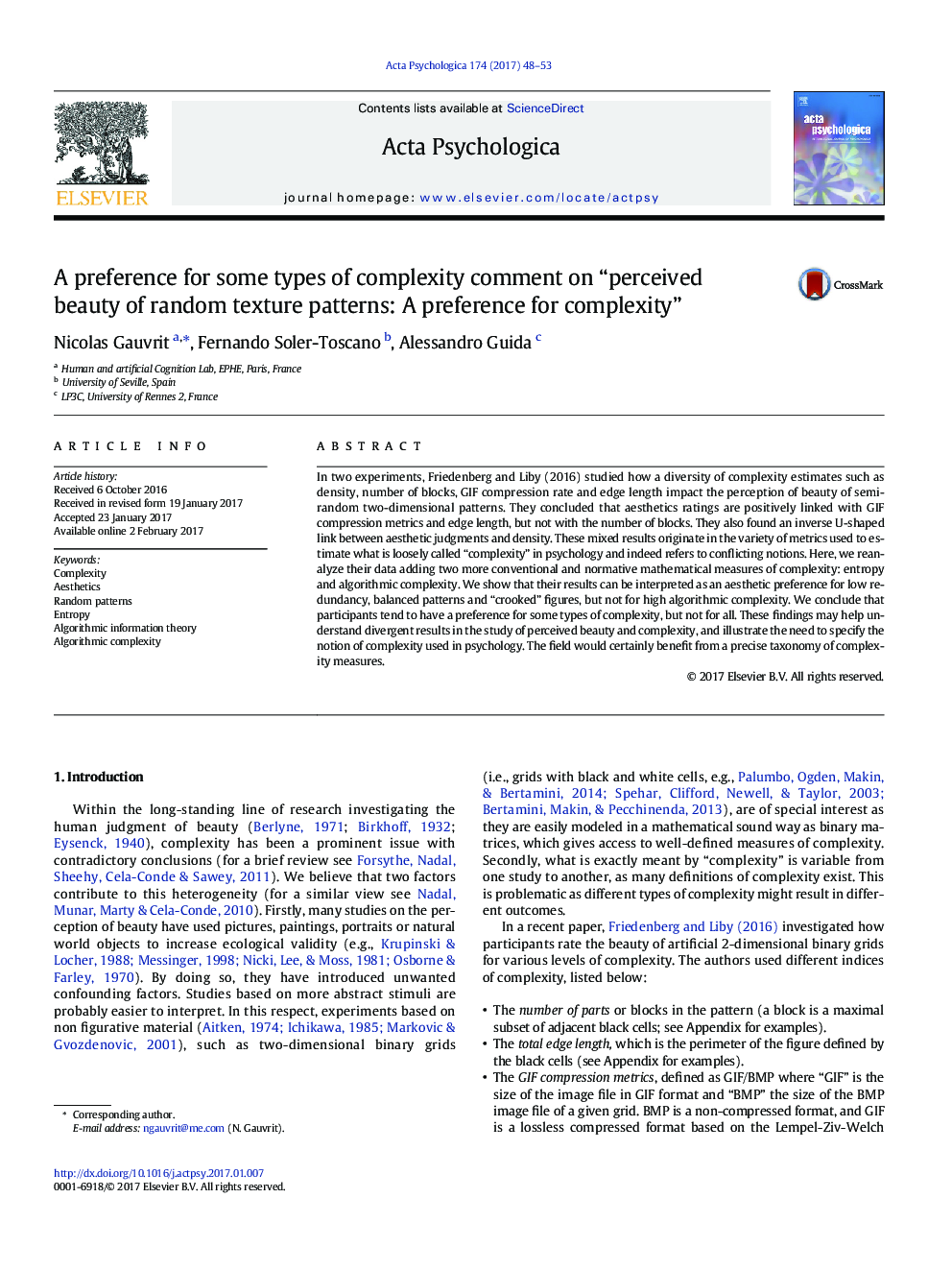| Article ID | Journal | Published Year | Pages | File Type |
|---|---|---|---|---|
| 5040239 | Acta Psychologica | 2017 | 6 Pages |
â¢Mixed results have been found concerning complexity and aesthetic preferences.â¢This originates in the variety of conflicting complexity measures used.â¢We find a preference for entropy, but not for algorithmic complexity per se.
In two experiments, Friedenberg and Liby (2016) studied how a diversity of complexity estimates such as density, number of blocks, GIF compression rate and edge length impact the perception of beauty of semi-random two-dimensional patterns. They concluded that aesthetics ratings are positively linked with GIF compression metrics and edge length, but not with the number of blocks. They also found an inverse U-shaped link between aesthetic judgments and density. These mixed results originate in the variety of metrics used to estimate what is loosely called “complexity” in psychology and indeed refers to conflicting notions. Here, we reanalyze their data adding two more conventional and normative mathematical measures of complexity: entropy and algorithmic complexity. We show that their results can be interpreted as an aesthetic preference for low redundancy, balanced patterns and “crooked” figures, but not for high algorithmic complexity. We conclude that participants tend to have a preference for some types of complexity, but not for all. These findings may help understand divergent results in the study of perceived beauty and complexity, and illustrate the need to specify the notion of complexity used in psychology. The field would certainly benefit from a precise taxonomy of complexity measures.
